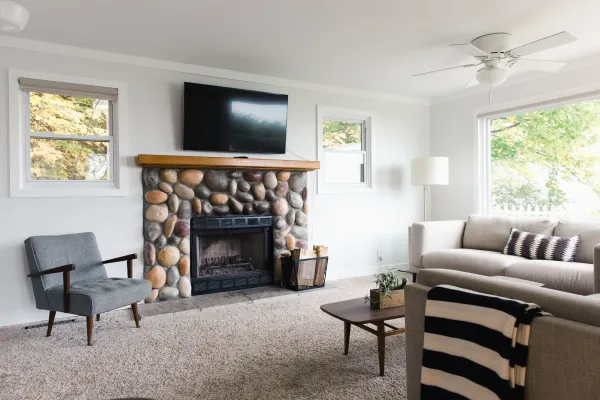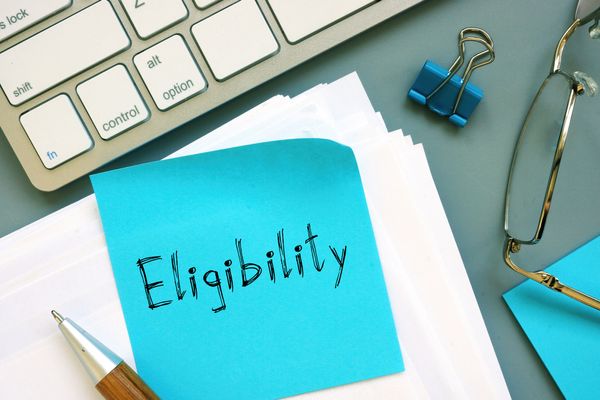Acquiring a rental property is one of the best ways to create a passive income stream and put you on the path to building wealth. However, before you jump into the world of property management, there are certain actions you should take to make sure that your investment is protected so that it can continue to generate a positive cash flow.
A property management checklist can help you save a ton of time and money by guiding you through all the necessary steps of managing a property. It's a key tool that every landlord should have on hand, whether you intend to manage the property yourself or not. If you're looking for property management tips, use this 30-step property management checklist to make sure you keep your affairs in order.
Property Management Checklist
In this 30-step property management checklist, we'll outline key steps that you should take throughout the entire process of managing a property from initially attracting tenants all the way to turning around a property to get prepare for new tenants after the old ones move out. If you find yourself in a specific scenario, feel free to skip ahead to the section that most applies to your current situation.
Attracting Renters
Whether you've just purchased your first rental property or already manage 100 doors, you'll want to create a systematic process for getting each unit rented as quickly as possible. Below, are a few steps you can take to get it ready and attract potential tenants.
- Decide your rental rates in advance (set both low and high rates).
- Develop a rental ad to help your property stand out from the competition.
- Use a high-quality camera to take pictures of your rental or have professional photos taken.
- Create flyers with details about your rental unit. Be sure to include your contact information so that people can reach out to you with their questions.
- Take advantage of online platforms. Facebook, Zillow, and Craigslist are great websites to utilize to blast your listing. Be sure to include your listing on local area websites as well.
- Take an offline approach to your marketing by putting up "For Rent" signage.
- Provide a way for potential tenants to schedule showings or schedule an open house to drive interest.
Screening Renters
Now that you've attracted some potential renters, it's a good idea to screen them before you agree to let them rent your property. After all, you've put hard earned money into acquiring the property and getting it ready to rent, so the last thing you want to do is sign a lease with tenants who could be a nightmare or cost you more money.
- Set up an after-hours answering service to maintain an open line of communication with tenants.
- Perform a phone screen questionnaire before showing your unit.
- Show your unit to potential tenants.
- Contact interested parties to follow up.
- Direct prospective tenants to complete a rental application and pay the applicable application fee.
- Perform a criminal background check and credit check on prospective tenants.
- Get references from previous landlords on prospective tenants.
- If you are unable to speak with a landlord by phone, send over a verification form for them to complete and fax back to you.
- Create a set of rental standards and stick to it! Use this list to decide whether or not a potential tenant qualifies.
- If the tenant is eligible to move forward in the process, contact them with the next steps, including a move-in date and scheduling a meeting to sign the rental agreement.
- If you determine that a prospect is unable to move forward in the process, you should send them a decline letter to put them on notice. File away their original application and denial letter in case they attempt to apply again.
Conduct a New Tenant Orientation
After you and the new tenant have both signed the lease agreement, it's a good idea to meet and outline the rules and guidelines to make sure both of you are on the same page as far as expectations.
During this time, you may have your tenant sign and/or submit the following items:
- The lease: this agreement should be signed and initialed on all pages. This serves as proof that both parties have reviewed the documentation and consent to the terms.
- A copy of the individual driver's licenses for each person who will occupy the unit.
- Security deposit: this deposit will be held and can help pay for damages that could occur throughout the lease.
- The first month's rent
- A copy of the "Utility Transfer Agreement" - This document states that the tenant agrees to transfer the utilities before moving into the property.
- A "Truth in Renting" book should be provided to tenants. They should initial the form to indicate that they have received a copy.
- The tenant should initial to confirm that they have been provided with a copy of the "Lead-Based Paint Notification" and the "Lead-Based Paint Booklet".
- The tenant should initial the property management checklist to indicate they received a copy of the "Move Out Charges" document.
- The tenant should complete a "Tenant Emergency Contact Information" form.
- If the tenant has a pet, they should sign a "Pet Agreement" and pay any applicable fees.
During this meeting, you will also want to do the following:
- Provide tenant with a list of contact information for the property management team.
- The tenant should complete a W-9 form to accompany the security deposit that will be sent to the bank.
- Include policy on handing over keys.
- Checklist for office processes
- Make sure all tenant information is properly entered into your rental management system.
- Have backup files of your Lease Signing Documents and mail copies to the tenant within the first week.
- Create a tenant file that is stored both physically and electronically.
Retaining Your Tenants
In order to get your tenants to want to continue renting your unit or property, here are some retention suggestions.
- Implement a tenant appreciation program.
- Promptly perform maintenance and repairs.
- Preventative maintenance is key to finding and addressing issues early on.
- Establish your rules upfront for handling the collection of rent and the eviction process.
- Send renewal letters to tenants at least 90 in advance.
- Create template letters so you can quickly address common concerns.
Move Out Process
When a tenant is ready to move out of your unit, there are a few tasks that should be done before they are free to go.
- Complete a move out inspection document that outlines the status of the unit and take photos during the walk-through.
- Make sure your property management checklist defines what constitutes "wear and tear", and indicates what damages a tenant will be responsible for covering with their security deposit.
- Mail security deposit checks and letters to former tenants within 30 days of move out.
Process for Unit Turn Around
Once your old tenants have moved out, you can review the initial steps you used to acquire tenants in the first place and complete these tasks to get the unit ready for new renters.
- Complete work orders and schedule repairs.
- Thoroughly clean and freshen the unit.
- Post pictures online for marketing purposes.
Save Thousands When You Buy Your First Rental Property
Now that you have a general idea of what is required when managing a rental property, you're now ready to make the jump to purchase one.
To make the most out of your investment, buy your property with a SimpleShowing Agent and receive up to 1.5% of the purchase price or $5,000 on average towards your closings costs.
Contact us or book a showing of any property to get started.






